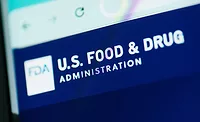California Evaluates Food Packaging under Its Safer Consumer Products Program

The safety of substances used in food packaging has been in the spotlight for at least a decade now due to a wide range of factors, from improved analytical techniques to environmental concerns to increased media scrutiny and more aggressive attacks by nongovernmental organizations. In some cases, the U.S. Food and Drug Administration (FDA) and other governmental agencies have determined that previous risk assessments supporting regulatory clearances of a food contact substance are no longer sufficient. However, in other cases, companies and local jurisdictions are banning food packaging and food packaging materials that FDA and the European Food Safety Authority have determined do not present health or safety concerns based on current use.
Some of the actions taken by states due to these concerns include Washington, California, and Connecticut evaluating ways to reduce exposure to pre- and polyfluoroalkyl substances (PFAS). More specifically, the Connecticut Interagency PFAS Task Force identified legislative opportunities to reduce PFAS exposure, such as requiring all water bottlers in the state to test their products for PFAS and requiring PFAS content product labeling. States from Vermont and Maine to Oregon and California have passed bans on single-use plastic bags.[1] In other words, safety and environmental concerns regarding food packaging are taking a prominent position.
Food packaging manufacturers need to be prepared for the continuation of new laws and regulations banning or restricting food packaging and food contact materials. An initiative currently under way that could have a significant impact on the food packaging industry is California’s Safer Consumer Products Program. Currently, the California Department of Toxic Substances Control (DTSC) is reviewing the use of four classes of chemicals found in food packaging as part of this program. The chemical groups are bisphenol A (BPA) and BPA analogues, ortho-phthalates, PFAS, and polystyrene. This article will explore the possible outcomes of DTSC’s review of these classes of chemicals and possible subsequent regulatory responses and how they would impact the food packaging industry.
Background
California’s Green Chemistry Initiative, adopted in 2008, authorized the California Environmental Protection Agency’s DTSC to develop regulations to identify and prioritize chemicals of concern in consumer products and establish a process for evaluating potential safer (or “greener”) alternatives. The resulting regulations—referred to as the “Safer Consumer Products [SCP] Regulations”[2]—took effect in October 2013.
The SCP regulations established a four-step process to identify and regulate products that may expose consumers to toxic chemicals:
1. DTSC publishes a list of “candidate chemicals” and outlines a process to add chemicals to the list.
2. DTSC evaluates the safety of candidate chemicals in specific consumer products and develops a list of potentially harmful product-chemical combinations to be listed as “priority products.” Importantly, a product-chemical combination does not formally become a priority product until DTSC regulations designating it as such take effect. In addition, the department is required to issue a work plan every 3 years that identifies the product categories that DTSC will evaluate to identify priority products.
3. Responsible entities inform DTSC that their products have been listed as a priority product and then perform an alternatives analysis for the product to identify how environmental and public health impacts of the chemical may be limited.
4. DTSC issues a regulatory response, which could include: requiring supplemental information; requiring additional information be provided to consumers; imposing product-use restrictions; banning the product; requiring engineering or administrative controls; requiring an end-of-life management program; or when no viable safer alternative is found, requiring the manufacturer to initiate research to find a safer alternative.
DTSC’s 3-year priority product work plan for 2018–2020[3] identifies food packaging as a priority product. Food packaging is defined as “any product that is used to package hot, cold, or room-temperature food items for wholesale sale to restaurants and grocery stores or for retail sale to consumers.” DTSC explained that this product category was included due to concerns regarding exposure to the candidate chemicals that are potentially contained in food packaging. The full list of candidate chemicals includes more than 3,000 chemicals.
The draft work plan provides the following examples of candidate chemicals found in food packaging: (1) BPA and bisphenol S as “constituent[s] in plastic resin lining food and beverage cans,” (2) PFAS that “create grease-proof and water-proof coatings for food packaging,” (3) phthalates as plasticizers, and (4) styrene as a “constituent of polystyrene and rubber products.”
DTSC stated that it will consider regulatory requirements from other authoritative bodies—such as FDA and the California Department of Public Health—when evaluating food packaging as a potential priority product. DTSC further stated that it does not intend to duplicate or conflict with any existing statutory or regulatory requirements.
In an October 24, 2019, webinar on the 3-year priority product work plan, DTSC focused on the four chemical/cases of chemicals in food packaging mentioned above.
BPA and Its Alternatives
DTSC issued a work plan implementation document titled “Bisphenol A and its Alternatives in Food Packaging”[4] in October 2019. The document points out that BPA, which is used in can and lid liners to protect metal packaging from corrosion and act as an inert barrier to a wide variety of food types, is no longer used by many food packaging manufacturers. In addition, DTSC acknowledged that FDA considers the use of BPA in food packaging material as safe. However, the department expressed concern that other bisphenols—such as bisphenol F, bisphenol S, and bisphenol AF, which are on DTSC’s candidate chemical list—and glycidyl methacrylate (also on DTSC’s candidate chemical list) may be used as replacements for BPA.
In the preliminary screening results section of the implementation document, DTSC suggests that BPA’s “hazard traits” include developmental toxicity, reproductive toxicity, endocrine toxicity, immunotoxicity, and neurodevelopmental toxicity. The document cites a number of studies supporting its concerns about BPA’s hazard traits. However, there was no mention of the Consortium Linking Academic and Regulatory Insights on BPA Toxicity (CLARITY)-BPA study. This study was conducted at FDA’s National Center for Toxicological Research (NCTR),[5] a collaboration between the National Institute of Environmental Health Sciences of the National Institutes of Health, NCTR, and the National Toxicology Program (NTP).
The CLARITY-BPA research program has two components: a core study of BPA toxicity in rate and grantee studies testing a range of additional end points. When NTP issued a draft report in February 2018 on the core study, which involved a comprehensive 2-year rodent study evaluating the effect of BPA, then-FDA Deputy Commissioner for Foods and Veterinary Medicine Stephen Ostroff, M.D., issued a statement[6] in which he wrote, “Our initial review [of the report] supports our determination that currently authorized uses of BPA continue to be safe for consumers.” A final report integrating published findings from the core study and grantee studies was expected in late 2019 but has not been published yet.
On November 19, 2019, DTSC held a public workshop on the use of BPA/BPA alternatives in food packaging [and on ortho-phthalates (OPs), which are discussed in the next section]. During the meeting, DTSC suggested that while there are numerous alternatives to BPA for the manufacturing of liners, many of them exhibit similar hazard traits. The department has requested detailed information from stakeholders, such as who manufactures food packaging liners and what types of liners (epoxy, oleoresin, vinyl, phenolic, acrylic, polyester, polyolefin) are used in food packaging. DTSC also asked about the specific uses of bisphenols in food packaging products and requested marketing information on food packaging containing BPA and its alternatives. A comment period for providing that information ended on December 19, 2019.
Ortho-Phthalates
DTSC issued a work plan implementation document titled “Phthalates in Food Packaging,”[7] in October 2019. OPs, or dialkyl or alkyl esters of 1,2-benzenedicarboxylic acid, are listed on DTSC’s candidate chemical list as a group of chemicals. The work plan points out that one of the major uses of OPs is as plasticizers to impart flexibility and durability to products made of polyvinyl chloride, including some food packaging products.
Various authoritative bodies have recognized certain OPs as reproductive and developmental toxicants, which DTSC cites as the basis for listing them on the candidate chemical list. Other concerns listed by the department are carcinogenicity and mutagenicity, in addition to their impact on sensitive subpopulations, such as children and pregnant women.
DTSC acknowledges that biomonitoring data suggest the use of OPs in food packaging is decreasing. In November 2018, FDA filed a food additive petition to amend its food additive regulations to remove the clearances for 26 OPs due to abandonment by industry.[8] Only four OPs are currently used in food contact applications in the U.S., according to the Flexible Vinyl Alliance.
At the November 19 workshop on OPs and BPA/BPA replacements, Rob Brushia, Ph.D., a research scientist with the SCP Program, noted that the department does not know a lot about alternatives to OP plasticizers. However, he pointed out that one alternative—diethylhexyl adipate—is on the candidate chemical list due to possible reproductive and developmental toxicity issues. It is found in foodservice wraps and gaskets of caps for nonalcoholic bottled beverages.
To help determine whether DTSC should propose one or more food packaging products containing OPs as a potential priority product, the department requested input from stakeholders through a public comment period. Information that was requested included the following: To what extent are OPs continuing to be used in food packaging, what alternative plasticizers are being used, and what companies manufacture bottle caps and gaskets that contain OPs and are sold in California? Comments were due by December 19, 2019.
PFAS
DTSC issued a work plan implementation document titled “Food Packaging with Perfluoroalkyl Substances (PFAS)” on October 24, 2019. The document points out that PFAS are a class of nearly 5,000 chemicals and are often used in paper food packaging—such as pizza boxes and microwave popcorn bags—to impart water, stain, and grease resistance. They also are used as mold-release agents in the production of molded fiber packaging. Under hazard traits, DTSC expressed concern that PFAS are extremely persistent in the environment. The department also noted that there is evidence that degradation products of the PFAS cleared by FDA have similar toxicological hazard traits, such as developmental toxicity, endocrine toxicity, hematoxicity, neurodevelopmental toxicity, and reproductive and developmental toxicity.
FDA has cleared 31 PFAS-related food contact notifications and indirect food additive petitions for use in food contact materials, which encompass 19 distinct polymeric PFAS formulations. However, the number of unique PFAS that may be present in food packaging is higher because the approved polymers can break down into nonpolymeric PFAS and may contain nonpolymeric PFAS impurities, according to DTSC.
Speaking at a January 14, 2020, DTSC-hosted workshop on PFAS and their alternatives in food packaging, Carla Ng, Ph.D., assistant professor, University of Pittsburgh, suggested that it is difficult to find public information about the structure and composition of many of the PFAS used in food contact materials since they are classified as polymers. She added that worst-case migration calculations do not take into account degradation products. Ng and others at the workshop criticized FDA for failing to consider environmental effects or the cumulative dietary exposure to fluorinated compounds in its toxicology reviews of PFAS.
Also speaking at the workshop, Brian Sernulka, representing the Foodservice Packaging Institute, pointed out that when using FDA’s methodology for calculating estimated dietary intake, the maximum levels of PFAS used in food packaging today are 13,000 times lower than the estimated safe levels. He also cautioned that different PFAS have very different properties in different applications and, therefore, should not be treated the same. Bill Orts, Ph.D., bioproducts research leader, U.S. Department of Agriculture, cautioned that if PFAS are banned, more metal-coated plastics will be introduced, and while they act as a good gas and oil barrier, they create challenges for recyclers.
DTSC requested information on food packaging containing PFAS through a public comment period. Among the questions asked were: What are the alternatives to PFAS; what impact do PFAS have on compostability; and what is the environmental fate of PFAS and alternatives when landfilled, composted, or recycled? The comment period, which had begun on October 25, 2019, ended January 14, 2020.
Styrene
The fourth chemical that DTSC has identified as a potential food packaging chemical priority product is styrene as a constituent of polystyrene food packaging. Adverse impacts identified by DTSC during the October 2019 webinar included potential exposure to residual styrene monomer in polystyrene products, litter, and degradation into microplastics. The department specifically mentioned possible consumption of polystyrene microplastics by aquatic animals, especially birds, due to the light weight of foam polystyrene. DTSC also expressed concern about the potential for bioaccumulation of microplastic particles.
DTSC has not announced a workshop on styrene or a formal comment period, although it has asked industry to submit information via email on the manufacturers of polystyrene food packaging, the percentage of foamed versus nonfoamed polystyrene food packaging, and the estimated migration rates of styrene monomer from polystyrene. Noting that there are 120 local bans on the use of polystyrene food packaging in California, DTSC has also asked for information on how these bans have impacted local jurisdictions.
Conclusion
With respect to California’s SCP Program, at this point, these priority product/chemical combinations are still undergoing evaluation and are not subject to any new regulations. If after stakeholder engagement, DTSC initiates and completes formal rulemaking to list a priority product, then manufacturers of that product will be required to determine whether it can be made safer through an alternatives analysis process.
Regardless of what happens next in California, however, manufacturers of food packaging and food contact materials need to adapt and be able to respond swiftly.
References
1. Due to COVID-19, some jurisdictions are now questioning the health implications of these bans. For example, Maine has postponed the effective date of its plastic bag ban until next year, and California had suspended the state's plastic bag ban for 60 days, from April 22 through June 22. In addition, Massachusetts, San Francisco, and other California counties temporarily banned the use of reusable shopping bags.
2. dtsc.ca.gov/what-are-the-safer-consumer-products-regulations/.
3. dtsc.ca.gov/wp-content/uploads/sites/31/2018/10/Final_2018-2020_Priority_Product_Work_Plan.pdf.
4. www.khlaw.com/Files/41955_Final-Public-Background-Document_FoPa_BPA%20(1).pdf.
5. ntp.niehs.nih.gov/whatwestudy/topics/bpa/index.html.
6. www.fda.gov/news-events/press-announcements/statement-stephen-ostroff-md-deputy-commissioner-foods-and-veterinary-medicine-national-toxicology.
7. dtsc.ca.gov/wp-content/uploads/sites/31/ 2019/10/Final-Public-Background-Document_FoPa_Ortho-phthalates.pdf.
8. www.federalregister.gov/documents/2018/ 11/14/2018-24657/flexible-vinyl-alliance-filing-of-food-additive-petition?utm_campaign=subscription%20mailing%20list&utm_source=federalregister.gov&utm_medium=email.
George G. Misko, Esq., is a partner in the Washington, DC, office of Keller and Heckman LLP.
Looking for quick answers on food safety topics?
Try Ask FSM, our new smart AI search tool.
Ask FSM →









